How To Grow And Care For Alocasia Dragon Scale?
Written by Ivy
Dec 29 2021
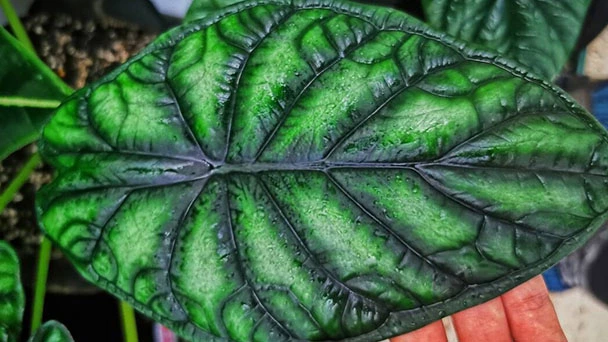
Like its parents, Alocasia dragon scale is a relatively short Alocasia variety. The downward concave veins of Alocasia dragon scale, combined with the dark and light green, make the thick leathery leaves show a scaly texture. The leaf back of Alocasia dragon scale is silver white, but the leaf veins are pink. The comparison of the two colors makes Alocasia dragon scale have a psychedelic temperament.
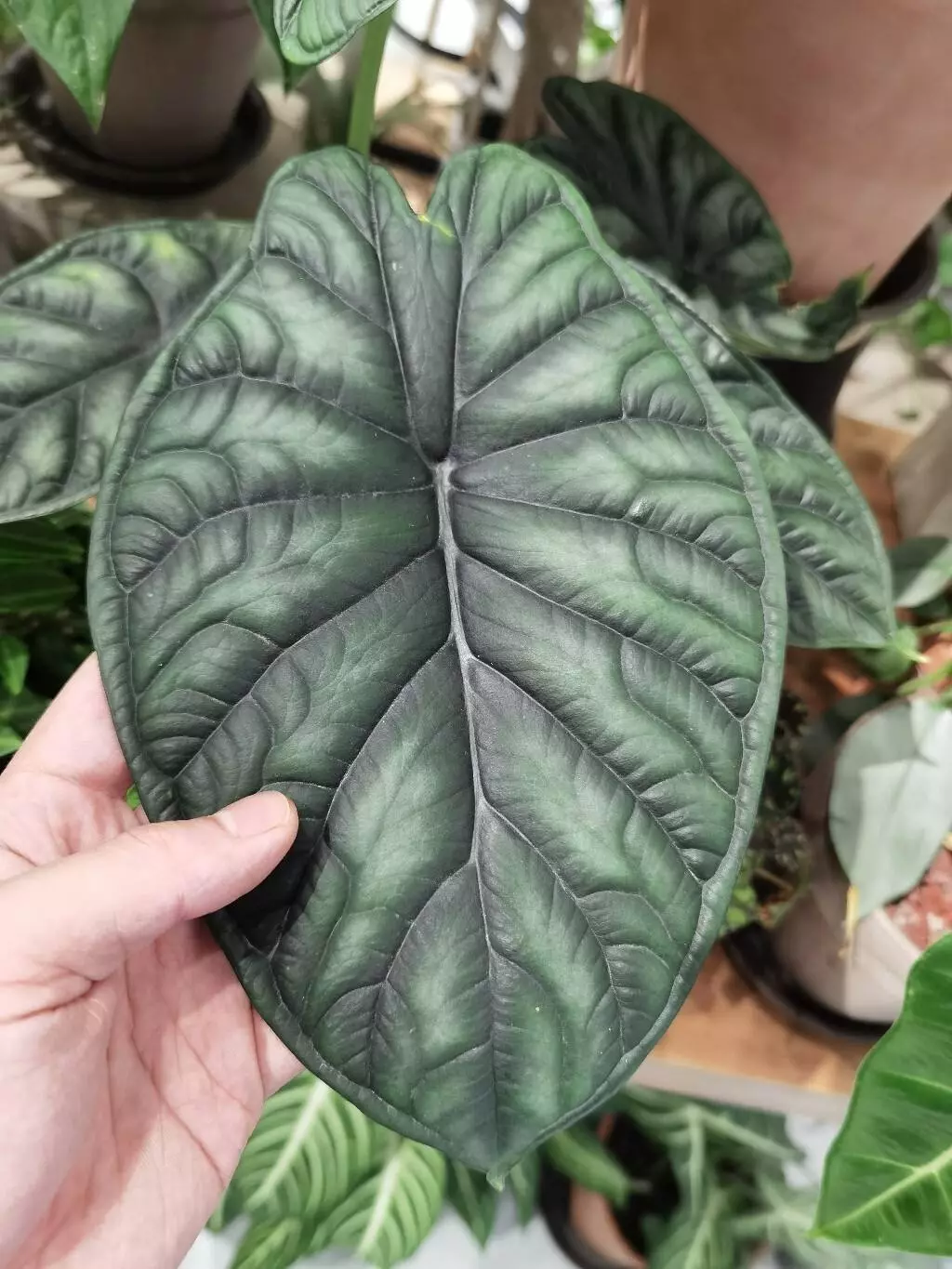
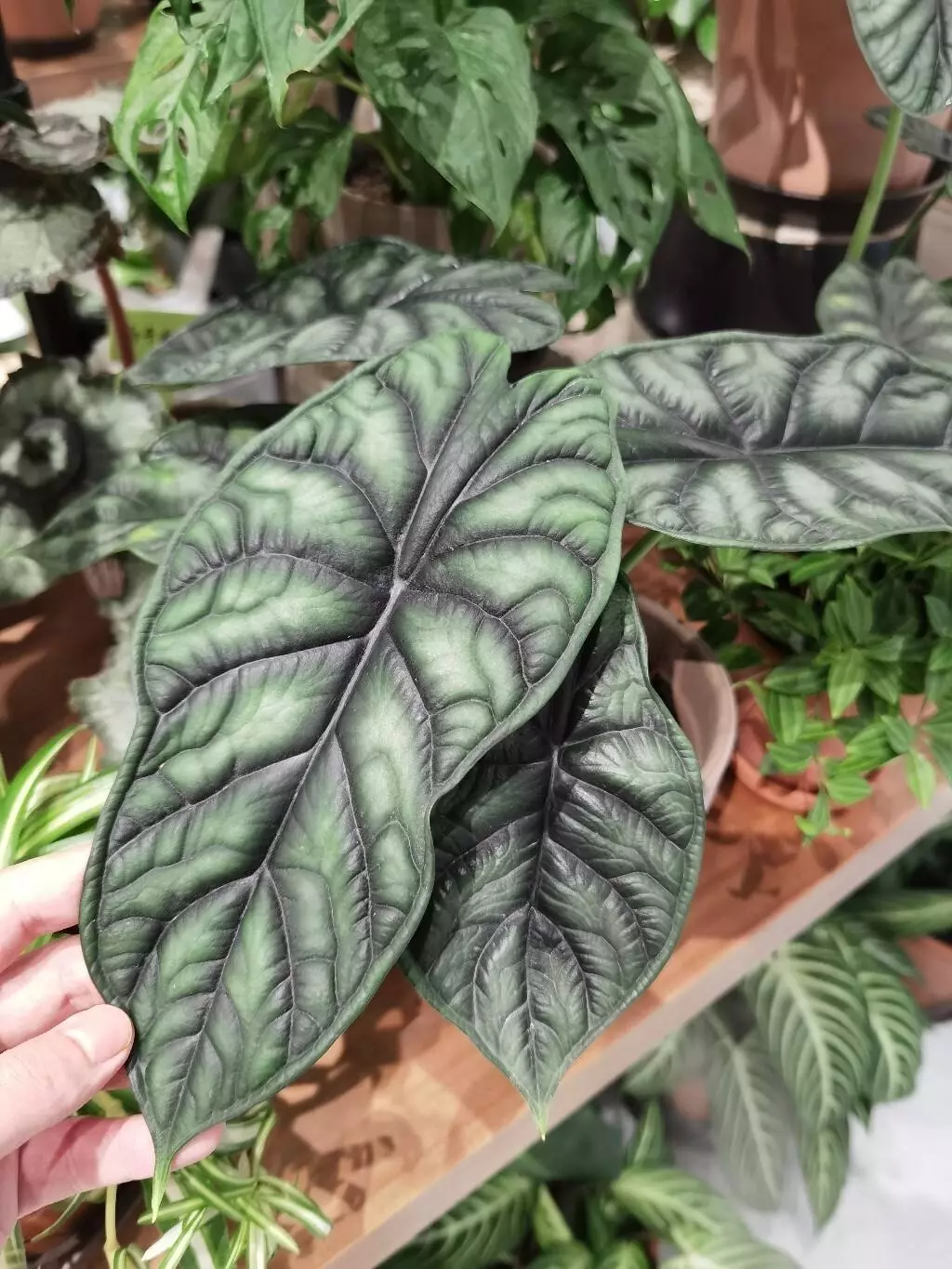
We can take Alocasia dragon scale to the water basin in the bathroom to wash the roots. The benefits of root washing: wash the soil, so as to observe whether the roots are strong, and brush away the insect eggs attached to the roots. We can clean up the withered and yellow leaves at the lower part of Alocasia dragon scale at the same time. We can also mix carbendazim powder with water according to the proportion in the manual, and soak the roots in carbendazim water to sterilize. We should let the water dry naturally and recover the wound produced in the process of root pruning. The root drying time of Alocasia dragon scale should not be too long. If the weather is good, it can be about 2 hours, and then it can be planted normally.
Different from the general symptoms of mosaic disease, the leaf shape of Alocasia dragon scale disease is basically normal, and only feathery yellow and green stripes appear along the leaf veins. The shape of diseased leaves was abnormal, and the leaves became smaller and slightly shrunk. The diseased leaves are crooked, and the leaf veins have obvious bulges, which appear thick. In serious cases, it will lead to plant dwarfing.
The main pests of Alocasia dragon scale are red spiders and aphids. If planted outdoors, give them sufficient light and pay attention to ventilation. Apply an appropriate amount of fertilizer to increase the resistance of Alocasia dragon scale. If it is planted indoors, it can be cleaned with clean water. In serious cases, we can use 2000 times liquid detergent and then clean with clean water.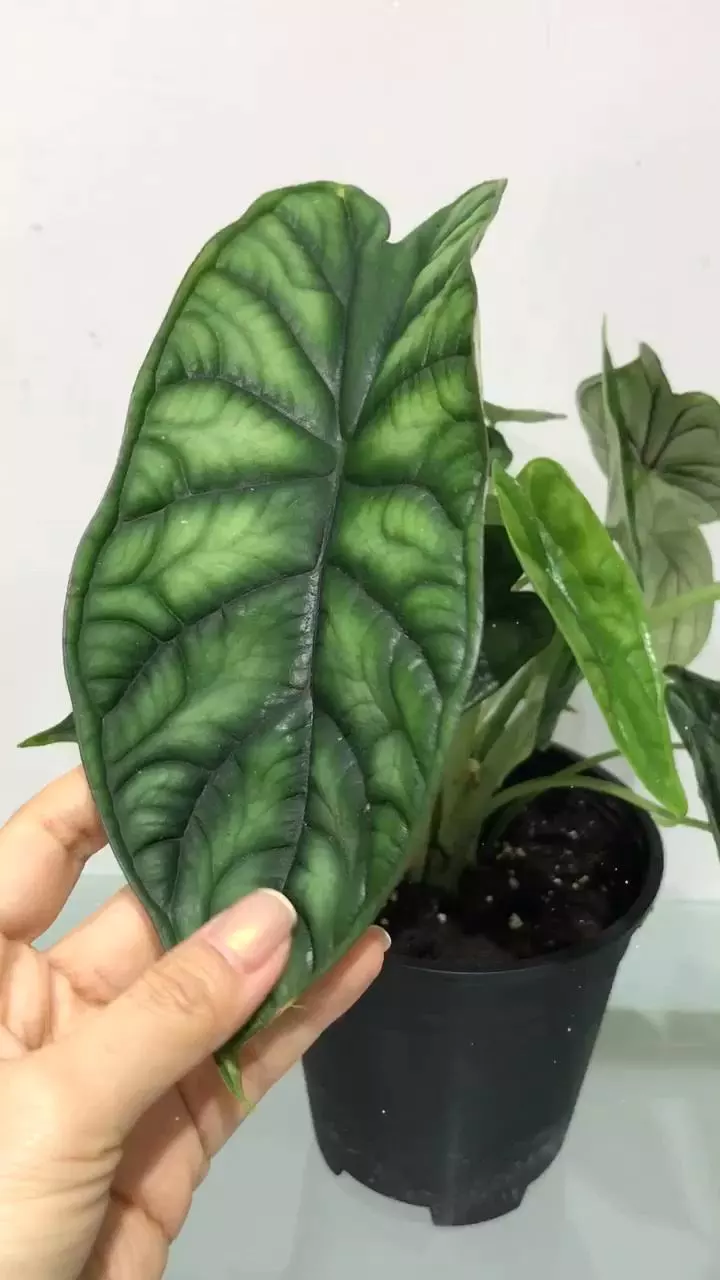
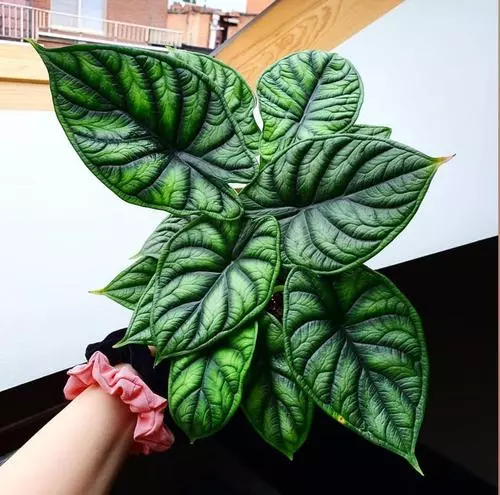
Alocasia Dragon Scale Quick InfoAlocasia Dragon Scale Care in DetailAlocasia Dragon Scale SoilAlocasia Dragon Scale WateringAlocasia Dragon Scale LightAlocasia Dragon Scale TemperatureAlocasia Dragon Scale HumidityAlocasia Dragon Scale FertilizerAlocasia Dragon Scale PruningAlocasia Dragon Scale RepottingAlocasia Dragon Scale Pest & Disease ControlAlocasia Dragon Scale PropagationAlocasia Dragon Scale Propagation from SeedAlocasia Dragon Scale Propagation from CuttingAlocasia Dragon Scale Propagation from DivisionAlocasia Dragon Scale Propagation from Bulbs
Alocasia Dragon Scale Quick Info
| Botanical/Scientific Name | Alocasia Dragon Scale |
| Common Name | Alocasia Baginda |
| When to Grow/Bloom/Harvest | Plant in spring and early summer |
| Uses | Easy-care house plant |
| Origin | South-East Asia |
| Light Care | Bright but indirect light |
| Soil Care | Moist but dries a bit between waterings |
| Temperature Care | 55-80°F (13-27°C) |
| Humidity Care | Humidity of 60-80% |
| Watering | Frequent watering |
| Pruning Care | Prune off dead or damaged foliage |
| Fertilizer Care | Low fertilizer requirements |
| Propagation | Division |
| Toxic | Toxic to both pets and humans |
| Flower Color | Small purple spathes |
Alocasia Dragon Scale Care in Detail

Alocasia Dragon Scale Soil
Alocasia dragon scale has similar habits to other Alocasia. Alocasia dragon scale likes loose, fertile and well drained soil. When raising Alocasia dragon scale, we can use peat soil, rotten leaf soil and fine sand to prepare cultivation soil, and we should mix rotten farm manure into the soil to improve soil fertility.Alocasia Dragon Scale Watering
Alocasia dragon scale likes to be wet. During the planting period, you can regularly check the dryness and wetness of the basin soil. When the soil is dry, water it to avoid water shortage and dryness of the plants. Moreover, clean the leaves with a wet towel or watering can once a week to clean the dust attached to the surface, keep the leaf green and avoid blocking the pores.Alocasia Dragon Scale Light
During the growth of Alocasia dragon scale, there is a certain demand for light. If the light is insufficient, the leaf color will be dim, but the plant is not sun resistant, and the leaves will be sunburned if the light is too strong. Therefore, in the process of planting, bright indirect light can be provided from November to May of the next year, with 50% shade from June to October.Alocasia Dragon Scale Temperature
Alocasia dragon scale likes a warm environment and is not cold resistant. It can only endure a low temperature of about 8 degrees at least. It is easy to be frostbitten and die in winter. During the maintenance period, we'd better build a simple greenhouse to keep the ambient temperature above 10 degrees. If it is cultivated in a greenhouse, the temperature should be stable between 20-25 degrees.Alocasia Dragon Scale Humidity
Alocasia dragon scale likes high air humidity, But don't like wet medium (the long-term humidity of the medium will lead to the decay of Alocasia dragon scale). The dry environment is very unfavorable to the growth of Alocasia dragon scale. In cultivation, we should spray water around Alocasia dragon scale to increase the air humidity. In the growing season of Alocasia dragon scale, it is better to be wet than dry; in winter dormant period, we should try our best to control watering and move indoors to survive the winter safely.Alocasia Dragon Scale Fertilizer
In the process of its growth, the consumption of Alocasia dragon scale is very large. Once the consumption is large, more nutrition is required. When the plant grows rapidly, we need to apply fertilizer to Alocasia dragon scale, which is generally maintained once every ten days, but do not touch the fertilizer to the root of Alocasia dragon scale, To prevent the root from being burned by fertilizer, pay attention to the comprehensive use of nitrogen, phosphorus and potassium fertilizer to make the growth of Alocasia dragon scale more balanced.
Alocasia Dragon Scale Pruning
- Trim Yellow Leaves
- Trim Edge Blade
- Overall Trim
Alocasia Dragon Scale Repotting
During Alocasia dragon scale repotting, we can gently hold the upper part of Alocasia dragon scale with our left hand, Hold the basin with your right hand and squeeze it gently (the plastic basin can be operated in this way. If it is a ceramic basin or ceramic basin, put the basin on the ground and knock it gently) to separate the soil and basin. The original soil block has a serious plate binding, which is not breathable enough, affecting its root absorption. Some soil will have a plate binding, which is more laborious, but take your time. If you can't, just use a small shovel. Alocasia dragon scale root trimming is also something we need to pay attention to, and the main root can't be completely The lateral roots are cut off at random. The roots that are not healthy enough are trimmed off, leaving only healthy and strong taproots, about 2-3cm long.We can take Alocasia dragon scale to the water basin in the bathroom to wash the roots. The benefits of root washing: wash the soil, so as to observe whether the roots are strong, and brush away the insect eggs attached to the roots. We can clean up the withered and yellow leaves at the lower part of Alocasia dragon scale at the same time. We can also mix carbendazim powder with water according to the proportion in the manual, and soak the roots in carbendazim water to sterilize. We should let the water dry naturally and recover the wound produced in the process of root pruning. The root drying time of Alocasia dragon scale should not be too long. If the weather is good, it can be about 2 hours, and then it can be planted normally.
Alocasia Dragon Scale Pest & Disease Control
The main disease of Alocasia dragon scale is leaf spot. If infected with leaf spot, the whole plant of Alocasia dragon scale will show symptoms. After infecting leaves, it can show three types of leaf symptoms:Different from the general symptoms of mosaic disease, the leaf shape of Alocasia dragon scale disease is basically normal, and only feathery yellow and green stripes appear along the leaf veins. The shape of diseased leaves was abnormal, and the leaves became smaller and slightly shrunk. The diseased leaves are crooked, and the leaf veins have obvious bulges, which appear thick. In serious cases, it will lead to plant dwarfing.
The main pests of Alocasia dragon scale are red spiders and aphids. If planted outdoors, give them sufficient light and pay attention to ventilation. Apply an appropriate amount of fertilizer to increase the resistance of Alocasia dragon scale. If it is planted indoors, it can be cleaned with clean water. In serious cases, we can use 2000 times liquid detergent and then clean with clean water.

Alocasia Dragon Scale Propagation
Alocasia Dragon Scale Propagation from Seed
The seeds of Alocasia dragon scale are easy to obtain, so we can reproduce with Alocasia dragon scale, which is easy to implement and a common method. First, we need to collect seeds. After planting, it needs to be operated in the open field. Generally, the method of drill sowing is adopted. After sowing, the seeds can be found to germinate for a period of time. After the seeds emerge, they can be transplanted.Alocasia Dragon Scale Propagation from Cutting
The rhizome of Alocasia dragon scale is very strong, so we can cut the rhizome of plants that have grown for several years every spring, about 10 cm, and then insert it directly into the planting basin. Wait patiently for a few days, and the rhizome will grow several leaves, so that it can be directly transplanted elsewhere for growth and development.
Alocasia Dragon Scale Propagation from Division
Generally, the growing Alocasia dragon scale often grows many small seedlings at the root, so we can dig them out and transplant them to other places to become new plants after they grow a little.Alocasia Dragon Scale Propagation from Bulbs
Generally, the planting land is made into a pattern of about 100 cm wide and 25 m long, and then the primary bulb is sown in the way of row spacing of 0.2 M and plant spacing of 0.08 m, and then the secondary bulbs treatment can shorten the distance than the primary bulb. The sowing depth needs to be controlled at about 5cm, then covered with soil and leveled, and then watered. After watering, it is necessary to spray weeding pesticides in time, which is conducive to future cultivation.Latest Updated
- Benefits of Bugleweed - 7 Science-backed Health Benefits
- Bugleweed Dangers & Side Effects - Is It Poisonous?
- How to Plant Evergreen Trees - What You Should Know
- When to Plant Evergreens - Grow Guide for Evergreen Trees
- 12 Wonderful Evergreen Shrubs for Your Garden
- 12 Popular Evergreen Plants with Pictures for Beginners
- When And How To Prune A Lilac Bush Like a Pro
- How to Grow & Care for Lilac Vine (Hardenbergia Violacea)
- Japanese Lilac Tree (Syringa Reticulata) Care & Propagation Guide
- Shumard Oak Pros and Cons - What to Know
Popular Articles
- Winter maintenance of Antirrhinum Majus
- How to Grow Terminalia Mantaly Tree
- How to Grow and Care for Crossostephium Chinense
- How to grow Antirrhinum Majus in spring
- Peristeria Elata (Dove Orchid) Profile: Info & Care Guide
- Underwatered Snake Plant (Sansevieria Trifasciata) - Signs And How To Fix
- How to Care for Brazilian Jasmine Plant (Mandevilla Sanderi)
- How to Grow & Care for Graptopetalum Purple Delight in Summer
- Rosa Chinensis (China Rose): Plant Growing & Care Tips
- How to Care for Baby Sun Rose (Aptenia Cordifolia)